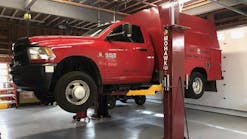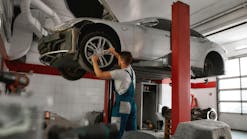Chrysler takes a gamble rejecting recall; repair options called limited at present
Chrysler’s decision to reject an NHTSA recall of 2.7 million Grand Cherokee and Jeep Liberty SUVs marks one of the company’s boldest moves as it rebuilds itself from bankruptcy. One that could prove disastrous. The company’s defiance can be seen as part of its new-found confidence. Or it could result in a public relations problem that will affect future sales and profitability.
NHTSA claims the cars in question – Grand Cherokees from model years 1993 to 2004, and Libertys from 2002 to 2007 – have a higher than average fire rate and are responsible for more than 50 deaths. Chrysler disputes NHTSA’s analysis and claims the vehicles meet or exceed all safety rules.
It’s too soon to know which side is right. There may or may not be more accidents caused by the fuel tank being located in the rear of the vehicle.
It’s also too soon to gauge the public’s reaction to the dispute. Non-compliance with recalls are not common, and the long-term impact in a company’s reputation varies.
That there are 2.7 million 1993 to 2003 Grand Cherokees and the Jeep Liberty in model years 2002 to 2007 still on the road makes this an important story for many consumers and the automotive aftermarket.
Independent repair shop owners need to be knowledgeable about both the NHTSA’s claims and Chrysler’s position.
The Center for Automotive Safety (CAS), the watchdog organization that first brought the matter to the NHTSA, claims the fuel tank located behind the rear axle and slightly below the bumper is vulnerable to rupture when the vehicle is hit from behind, which can and has resulted in fatal fires.
CAS claims the vehicles need a steel skid plate installed under the fuel tank, a longer filler hose from the gas pump to the vehicle's fuel tank and a new check valve system to shut off the flow of gasoline if the filler hose is yanked out of the tank in a crash.
The steel skid plate is available as an OE option, and according to Chrysler, 10 to 15 percent of these vehicles were sold with the skid plate. The skid plate was designed to protect parts of the vehicle from debris during off-roading.
Can aftermarket shops fix the problem?
Clarence Ditlow, CAS executive director, says the skid plate will make the vehicle 50 percent safer, but there are still crash modes that can result in a fire. A direct hit from behind is the most common cause. However, he says it will not protect the tank from a side hit or a rollover.
Then there’s the matter of the filler hose and the check valve. Ditlow says a repair shop may be able to find a workable filler hose and even a check valve, but a shop is not in a position to test the check valve system.
“I would not advise a repair shop doing it,” Ditlow told VehicleServicePros.
The odds of becoming a victim to an accident caused by this problem are very small, based on NHTSA’s numbers. But that won’t put everyone’s concerns to rest. One fatality is too much for those affected.
The safety of older vehicles is a growing concern for consumers as they continue to hold onto their cars longer.
Chrysler put its reputation on the line with this move.


